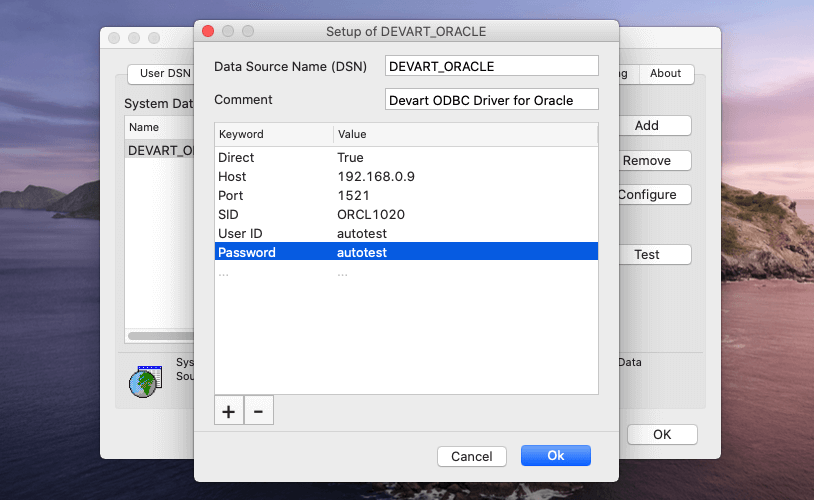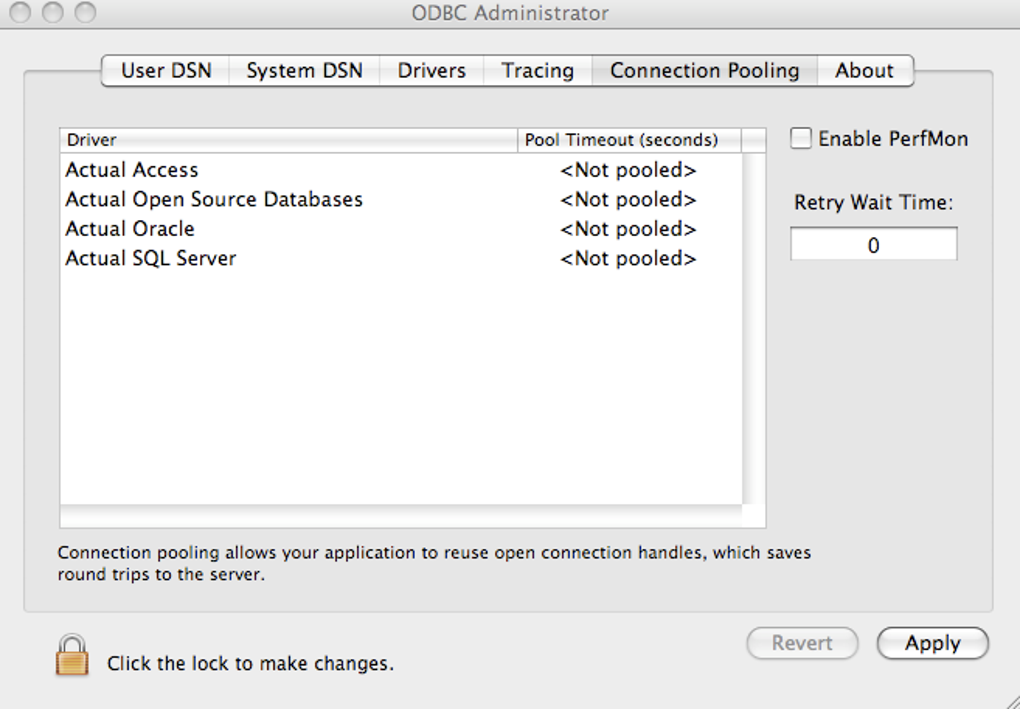If a user or system DSN has already been created for the driver, add the new entry to the odbc.
If you are creating the first DSN for the driver, you must manually create the odbc. The following example illustrates an odbc. When prompted for the ODBC connect string, enter the required connection parameters DSN name, server, user login name, and password , as well as any other parameters that you would like to enter as part of the connect string.
ODBC drivers that are compatible with Excel for Mac Creating a slicer is easy—just select the PivotTable you want to filter, and then on the ribbon, under the PivotTable Analyze tab, click the Insert Slicer button. ODBC drivers are libraries. These libraries implement ODBC API functions, which enable applications to speak to databases. Typically, applications are linked against driver managers, which load the appropriate driver libraries. However, applications may be linked directly to drivers.

Excel for Mac ODBC | FileMaker Community
If you set the server and user login name in the DSN, the only required parameters in the connect string are the DSN name and user password. Next Previous.
Vistadb Odbc Drivers For Mac
- mac install os from disk?
- come fare screenshot con mac?
- how do I access odbc data with excel for Mac OS - Microsoft Community!
- Mac OS X DSN Configuration.
In this Topic: ODBC Manager is available from: Step 1: If you choose the default directory when prompted, the installer installs the ODBC driver files in the following directories: Step 2: User DSNs: Click the Add button. Enter the name of the DSN and optionally a description. Since the release of Excel for Mac, customers have given great feedback about its ease of use and the benefits of the new features.
Choosing a chart type to best represent your data is often challenging. Let Recommended Charts take some of the pain away.
This feature allows you to see how selected data would be visualized on a variety of chart types before committing to one in particular. To see a collection of suggested chart types, select a cell in the range of data you want to visualize, and then on the ribbon, under the Insert tab, click Recommended Charts. With the Formula Builder in Excel for Mac, building formulas just got simpler. It allows you to search and insert a function, add data to defined function arguments, and get help on any function.
Excel for Mac offers a rich set of features that make creating and customizing charts simpler and more intuitive. One part of this fluid new experience is the Formatting task pane. The new Formatting task pane is the single source for formatting—all of the different styling options are consolidated in one place. With this single task pane, you can modify not only charts, but also shapes and text in Excel!
Slicers enable you to filter the data in a PivotTable report. It contains a set of buttons allowing you to find the items that you want to filter without the need to open drop-down lists.
ODBC drivers that are compatible with Excel for Mac
Creating a slicer is easy—just select the PivotTable you want to filter, and then on the ribbon, under the PivotTable Analyze tab, click the Insert Slicer button. To filter the PivotTable data, simply click one or more of the buttons in the slicer. Data Analysis ToolPak is an Excel add-in that helps develop complex statistical or engineering analyses. You provide the data and parameters for each analysis, and the tool uses the appropriate statistical or engineering macro functions to calculate and display the results in an output table.
Some tools generate charts in addition to output tables. If you want to clear the content of the selected cell or range, just press the delete key. This even works on your Mac laptops, where delete is actually the backspace key.

I've got postges 9.4 installed on Mac OS X 10.10.3 (Yosemite) I have access to it from psql and I have set up and filled a database I now want to access via ODBC - all on the localhost, no remote access involved. To get the 32 bit PSQL iODBC driver I've run the following command on the latest source code (psqlodbc-09.03.0400.tar.gz):
./configure CFLAGS='-arch i386 -D ENABLE_MYLOG' --with-iodbc=/usr/local/iODBC --with-libpq=/Library/PostgreSQL/9.4
make
Vistadb Odbc Drivers For Mac Windows 7

install_name_tool -change libssl.1.0.0.dylib /Library/ODBC/PSQL/lib/libssl.1.0.0.dylib /Library/ODBC/PSQL/bin/iODBC/psqlodbcw.so
install_name_tool -change libpq.5.dylib /Library/ODBC/PSQL/lib/libpq.5.dylib /Library/ODBC/PSQL/bin/iODBC/psqlodbcw.so
install_name_tool -change /Library/Frameworks/iODBC.framework/Versions/3.52/iODBC /Library/ODBC/PSQL/lib/iODBC /Library/ODBC/PSQL/bin/iODBC/psqlodbcw.so
install_name_tool -change /Library/Frameworks/iODBCinst.framework/Versions/3.52/iODBCinst /Library/ODBC/PSQL/lib/iODBCinst /Library/ODBC/PSQL/bin/iODBC/psqlodbcw.so
Vistadb Odbc Drivers For Mac Catalina
PSQL_Unicode_32 = PSQL iODBC Driver 32 bit (Unicode)
[PSQL_Unicode_32]

Driver = /Library/ODBC/PSQL/bin/iODBC/psqlodbcw.so
ServerName = 127.0.0.1
Port = 5432
Database = test_tables
Username = postgres
Password = sa
UpdatableCursors = false
[ODBC Drivers]
PSQL iODBC Driver 32 bit (Unicode) = Installed
Vistadb Odbc Drivers For Mac Os
[PSQL iODBC Driver 32 bit (Unicode)]
Vistadb Odbc Drivers For Mac Windows 10
Driver = /Library/ODBC/PSQL/bin/iODBC/psqlodbcw.so
Setup =
